Location: Hiroshima, Japan
Duration: 1 day
Period: March 2018
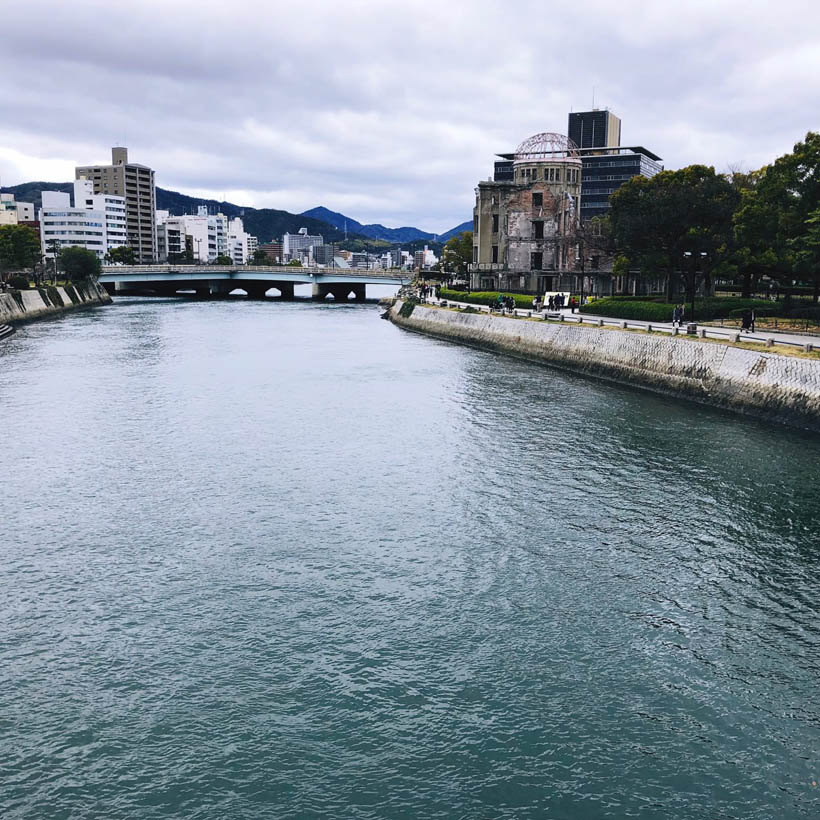
Hiroshima is one of those cities that symbolise a key moment in the history of our world: it was the first city to be attacked with an atomic bomb, which was a turning point at the end of the Second World War, but at a significant human cost of more than 100,000 casualties. It had a profound effect on both Japan and the world at large, of which we still feel the results to this day.
Hiroshima style okonomiyaki

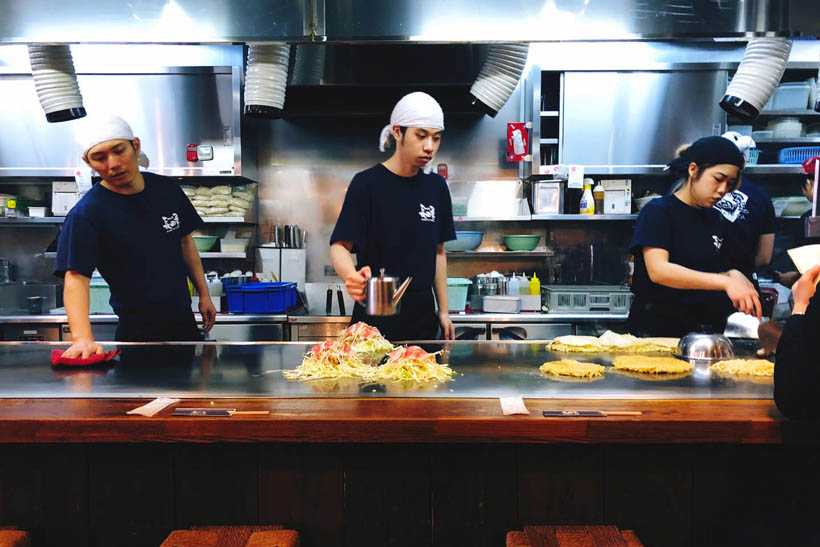
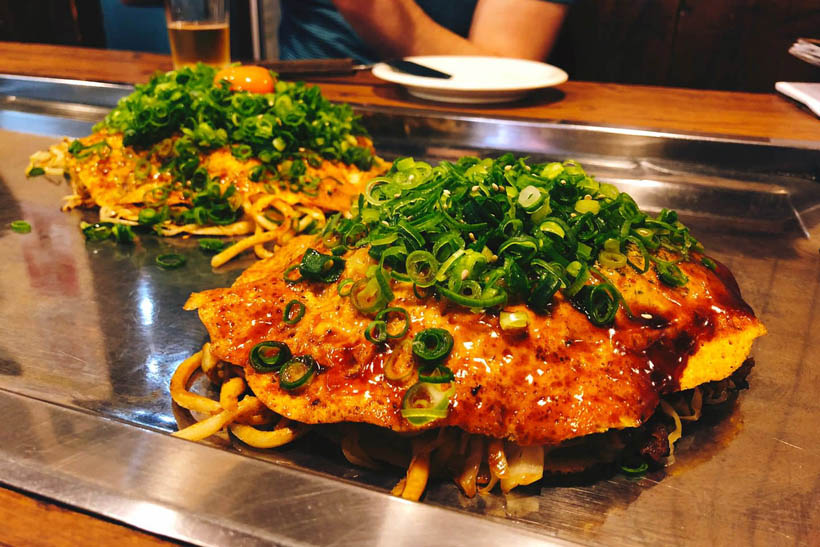
Before going to the Peace Memorial Museum we went to drop off our luggage at a specialised locker service in Hiroshima Station for a few hundreds Yen. This kept us from having to drag along our stuff across the city, as we wouldn't be staying overnight in Hiroshima. It's a cheap and hassle free way of keeping our things safe.
We went to eat okonomiyaki in a restaurant called Nagata-Ya, around 20 meters from where the bomb was dropped. Hiroshima style okonomiyaki differs from the Osaka style. The one in Hiroshima is made with noodles, and the ingredients aren't as mixed together as those in Osaka. These okonomiyakis are different from each other with their own distinct taste, but truth be told: I really loved both styles, and I can't say I prefer one over the other.
We went to the restaurant a bit before noon, which apparently was an excellent choice as the place was starting to get flooded by people when we left just after noon.
Peace Memorial Park
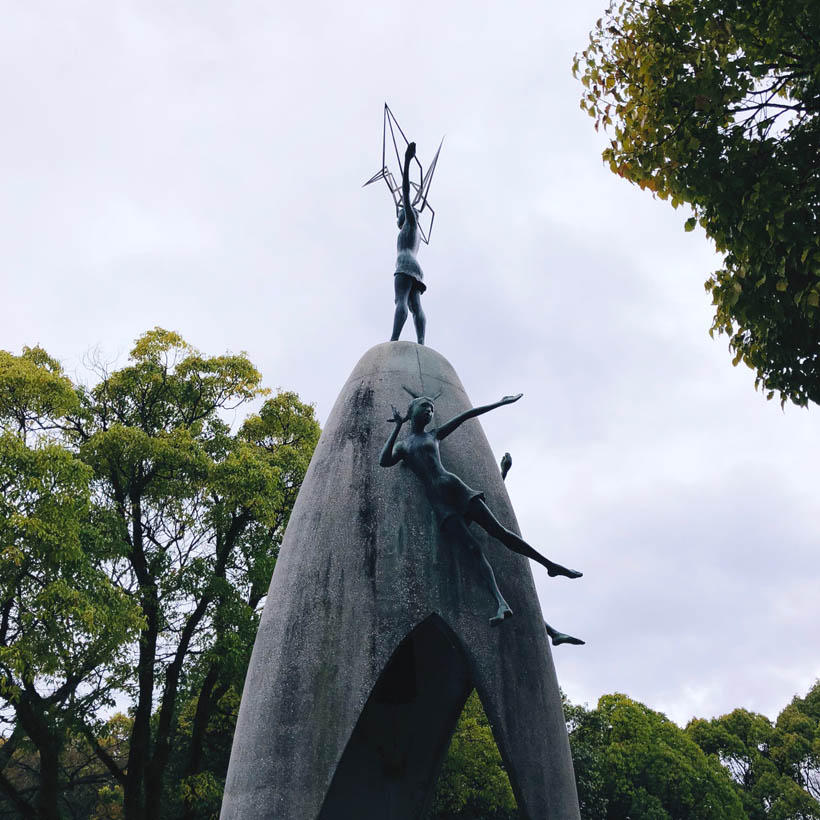
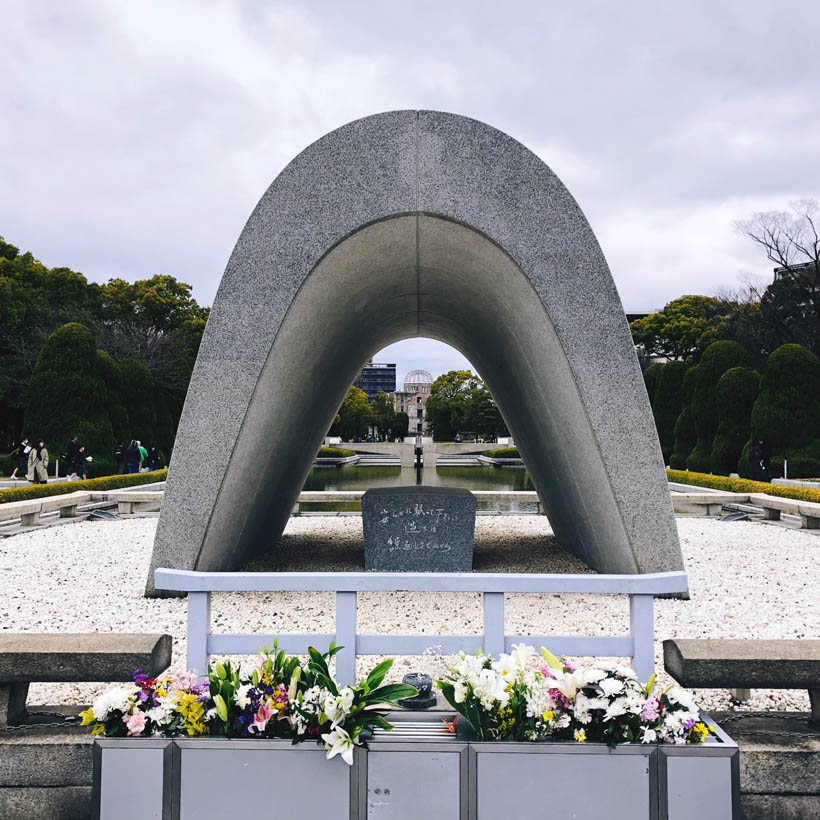
After our lunch we went straight to the Peace Memorial Park across the bridge. This park used to be the commercial center of the city, but the atomic blast destroyed everything, and after the war this place was kept as a memorial for the victims. It's a very serene place, with a few statues and thousands of paper cranes made by both local children and children from all around the world.
We talked to a local man named Jin about international politics, and the (lack of) self defense systems of Japan, which was a hot topic amongst the Japanese in those months (North Korea launched a test missile over Hokkaido a few months earlier). Given the location and the timing this talk was quite impactful to us.
Hiroshima Peace Memorial Museum
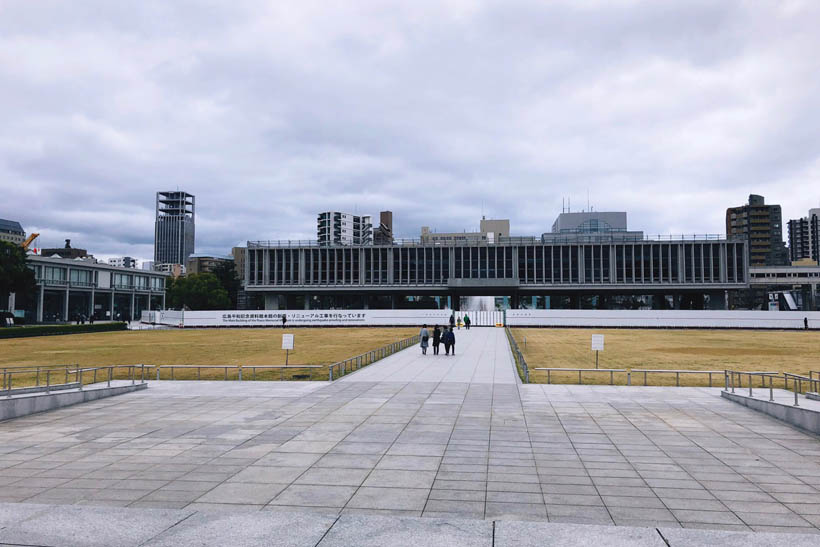
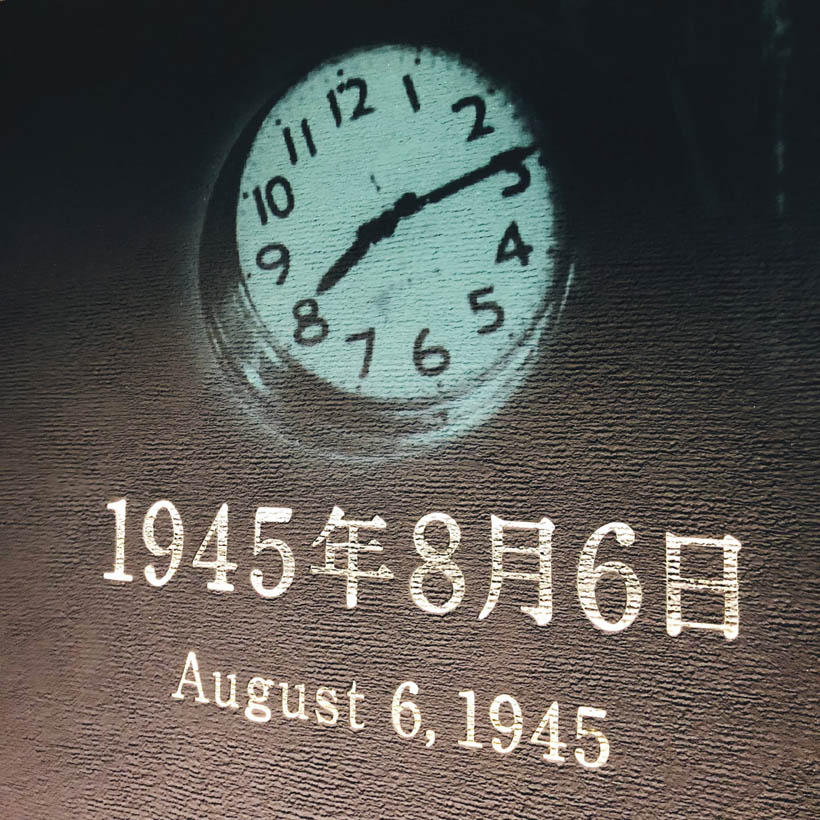

The largest building of the museum was being renovated when we were there, so the collection was moved to a temporary location, in a building that's a lot smaller than the regular museum.
The collection of the museum mostly consists of a large array of archival footage of the city before the bomb, and the months right after. It's a shocking look at how an event of a few seconds can alter (and end) the lives of thousands of people.
Even more horrifying are the video testimonials of locals that describe in great detail the moments after the bomb hit, what they felt, who they lost and what they thought it was at that time. It's a surreal thing to talk about, something that's unimaginable to most people.
In the museum there was also a massive timeline of all the events that lead to the development and deployment of the bomb, how the Japanese empire reacted and crumbled, and how it affects geopolitics to this day. It really puts everything in perspective, and it made one thing very clear to me: peace is fragile and it can disappear in a flash.
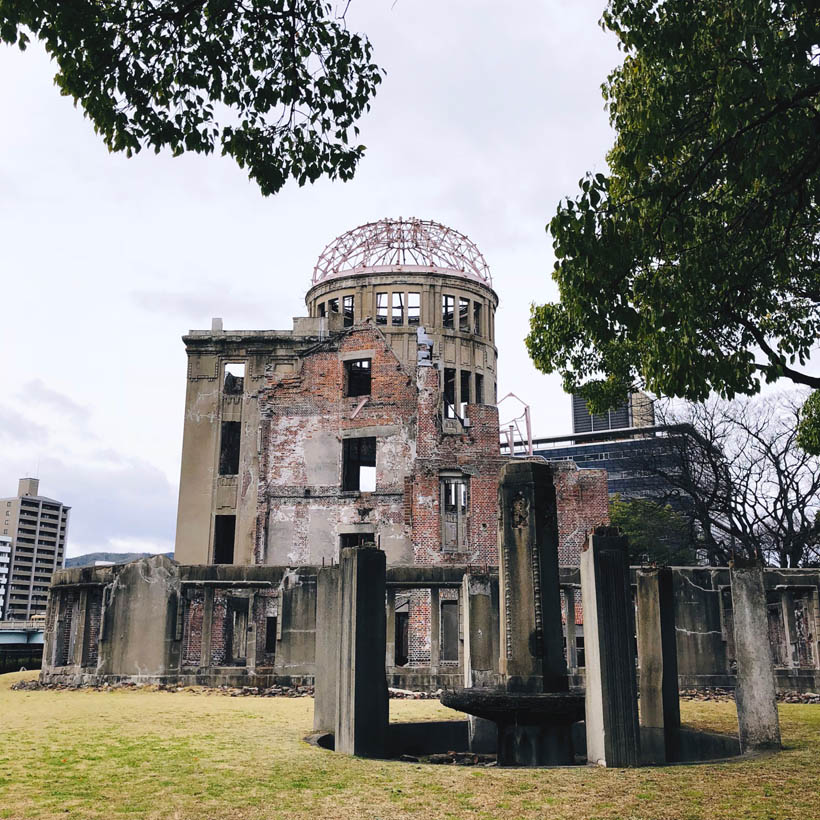


The museum was a must see, together with the Hiroshima National Peace Memorial Hall (a circular hall underground a few steps from the museum) and the Atomic Bomb Dome (an exhibition hall that survived the blast despite being one of the buildings closest to the explosion). It's an essential visit to understand the world a tiny bit better.
It's also a testament to the resilience of mankind, as there are few things in Hiroshima to remind of the disaster outside of the memorial, and together with cities that were also destroyed during the war (like Tokyo, which was nearly completely burnt to the ground by fire attacks) they are thriving nowadays.
Hiroshima Castle Park
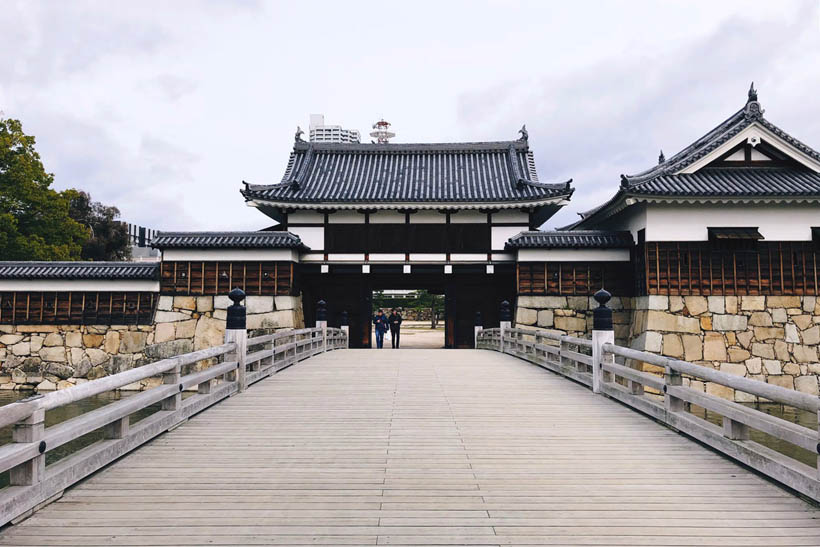
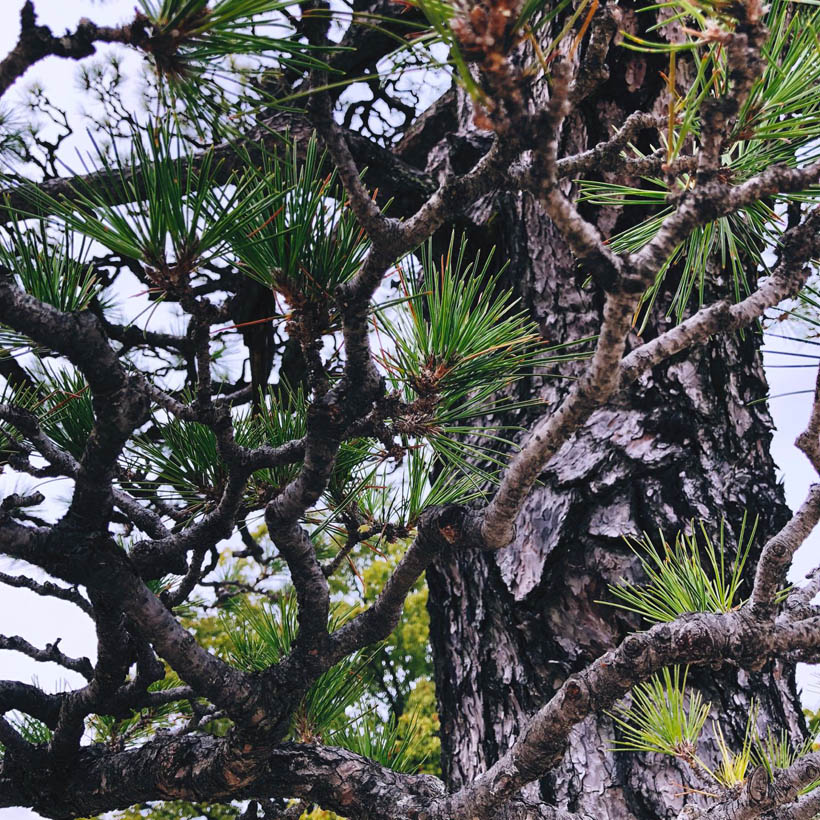
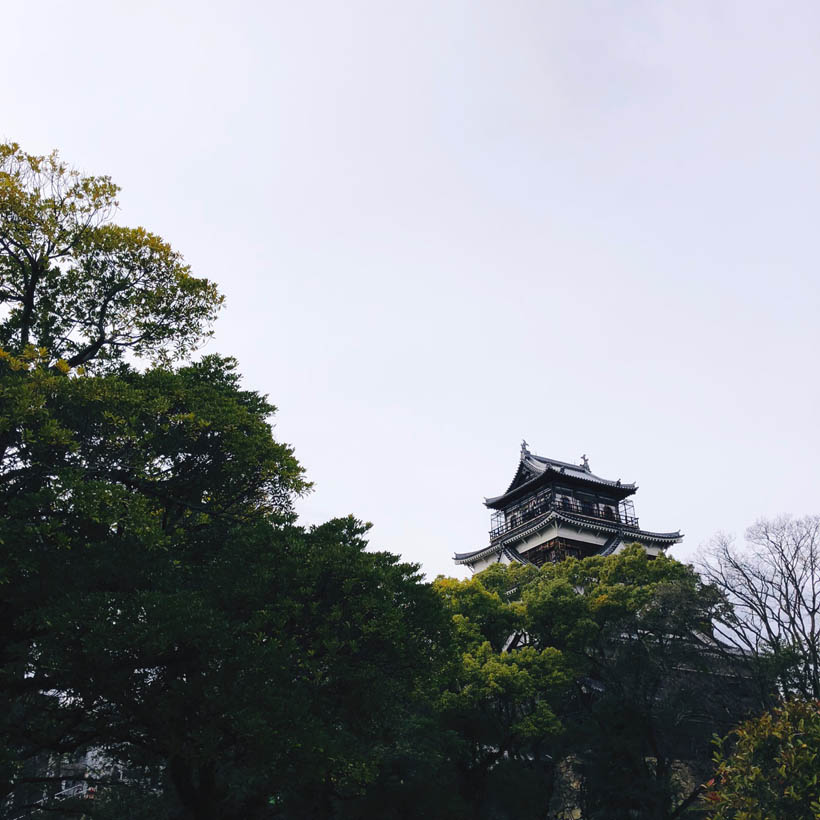
After we were overwhelmed at the museum we went for a walk through the park of Hiroshima Castle. It's a big park surrounded by a moat, with quite a few big trees inside and a short hike up a small hill to reach the castle itself. We didn't visit the building itself, as we had to catch our train to our next destination: Miyajima.
Other posts about this trip
- Our travel video of Japan
- Exploring the different neighbourhoods of Tokyo
- Visiting Nikko for half a day
- Discovering the ancient history of Kyoto
- Burning torches at the Omizutori festival in Nara
- Attending a sumo honbasho in Osaka
- Eating Wagyu beef and walking around in Kobe
- Hiroshima and the aftermath of the atomic bomb (this post!)
- Climbing Mount Misen in Miyajima and a quick stopover in Okayama
- Hakone (coming soon)
- Hakodate (coming soon)
- Sapporo (coming soon)
- Otaru/Yoichi/Noboribetsu (coming soon)